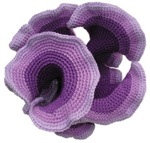 I still remember, back in 1978, flipping through the channels by getting up and going over to the TV set and turning an actual knob to one of 13 different channels we received at the time, and running across a show on PBS teaching history in an unusual manner. Instead of teaching history in the straightforward way we all learned it, such as "first the telegraph was developed, then the telephone...", the host was showing how history happened in a zig-zag manner, with influences coming from many directions, just like today. History, for the first time, was coming alive for me!
I still remember, back in 1978, flipping through the channels by getting up and going over to the TV set and turning an actual knob to one of 13 different channels we received at the time, and running across a show on PBS teaching history in an unusual manner. Instead of teaching history in the straightforward way we all learned it, such as "first the telegraph was developed, then the telephone...", the host was showing how history happened in a zig-zag manner, with influences coming from many directions, just like today. History, for the first time, was coming alive for me!
I was hooked.
The host was James Burke, and the series was called Connections. Beyond just enjoying the series itself, it was the first time I realized that learning could be fun! I also remember talking with adults about history, and seeing their reactions to my ability to intelligently discuss the subject. The mixture of fun, technical knowledge and ability to amaze came together in my brain. The geek bug had bitten me.
It wasn't until two years after the initial airing that I was first able to see the whole series in order. By the time I got my first VCR, the series wasn't easy to find on TV, and impossible to find in any video store. I always regretted not having that series available for easy reference, hoping to see it again some day.
Thanks to YouTube and Google Video, my wait is finally over! If you have seen this series before, here's your chance to see it for the first time in what may have been a long time. If you haven't seen it, I highly recommend checking this series out. Either way, you may also wish to download and save it to see again and again.
Over at Google Video, the BBC has made episodes 1, 2, 3 and 4 available.
All 10 episodes are already up over at YouTube. Since each episode is about 50 minutes long, and YouTube doesn't allow videos longer than 10 minutes, each episode has been broken up into 5-6 parts. Here is a complete index for the episodes and each of their component parts over on YouTube:
[Videos deleted by YouTube]
Update (4/17/06): Although Connections is no longer available through YouTube, it and its sister series The Day The Universe Changed are available as free podcasts. See this post for more details.



 Through December 26th,
Through December 26th, 
 The new
The new 



